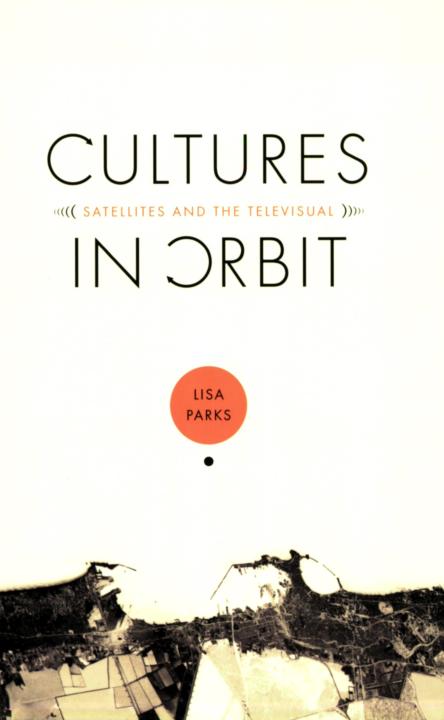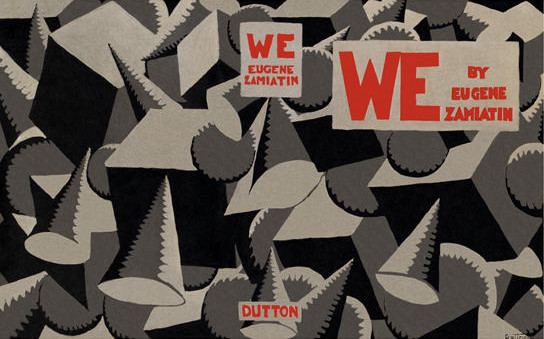Lisa Parks: Cultures in Orbit: Satellites and the Televisual (2005)
Filed under book | Tags: · archaeology, art, body, journalism, mass media, satellite, space, technology, television, vision

“In 1957 Sputnik, the world’s first man-made satellite, dazzled people as it zipped around the planet. By the beginning of the twenty-first century, more than eight thousand satellites orbited the Earth, and satellite practices such as live transmission, direct broadcasting, remote sensing, and astronomical observation had altered how we imagined ourselves in relation to others and our planet within the cosmos. In Cultures in Orbit, Lisa Parks analyzes these satellite practices and shows how they have affected meanings of “the global” and “the televisual.” Parks suggests that the convergence of broadcast, satellite, and computer technologies necessitates an expanded definition of “television,” one that encompasses practices of military monitoring and scientific observation as well as commercial entertainment and public broadcasting.
Roaming across the disciplines of media studies, geography, and science and technology studies, Parks examines uses of satellites by broadcasters, military officials, archaeologists, and astronomers. She looks at Our World, a live intercontinental television program that reached five hundred million viewers in 1967, and Imparja tv, an Aboriginal satellite TV network in Australia. Turning to satellites’ remote-sensing capabilities, she explores the U.S. military’s production of satellite images of the war in Bosnia as well as archaeologists’ use of satellites in the excavation of Cleopatra’s palace in Alexandria, Egypt. Parks’s reflections on how Western fantasies of control are implicated in the Hubble telescope’s views of outer space point to a broader concern: that while satellite uses promise a “global village,” they also cut and divide the planet in ways that extend the hegemony of the post-industrial West. In focusing on such contradictions, Parks highlights how satellites cross paths with cultural politics and social struggles.”
Publisher Duke University Press, 2005
ISBN 0822334615, 9780822334613
256 pages
Review (John Cloud, Technology and Culture, 2006)
Review (Howard Fremeth, Topia, 2006)
Review (Gerald Sim, Screening the Past, 2006)
Review (Fredessa D. Hamilton, The Communication Review, 2007)
Notes from Lisa Parks’ 2008 talk on satellite art (Regine Debatty, We Make Money Not Art)
Yevgeny Zamyatin: We (1924–) [EN, DE, CZ, FR, ES, YU, SK, RU, CR, TR, GR]
Filed under fiction | Tags: · machine, science fiction, technology

“Shortly after the nascent Soviet government consolidated its power and launched a program of rapid industrialization, Yevgeny Zamyatin’s novel We (written 1920-21) scandalously questioned the validity of techno-scientific instrumentality, a central principle of societal transformation in Soviet Russia. The first major work of fiction to be censored by the new regime, the novel was smuggled to the West, translated into English, and became an ur-text of twentieth-century science fiction, in particular standing, alongside Aldous Huxley’s Brave New World and George Orwell’s 1984, as progenitor of a new anti-utopian subgenre warning of the mass cultural homogenization of humanity in the name of progress. Set in a future totalitarian OneState, the novel records the internal conflict and gradual self-awakening of the initially robotlike rocket engineer D-503, torn between his faith in state orthodoxy and yearning for perfect order, on the one hand, and, on the other, his growing awareness of his own disorderly, irrepressible, idiosyncratic subjectivity. The catalyst of this subversive development is the act of writing—paradoxical insofar as this act functions, in the totalitarian system envisioned by the novel, as one of the instruments of the state’s all-pervasive control. […]
Zamyatin’s anti-utopian novel establishes a counterpoint to the purely instrumental technologies conceived by technophiles and tech-nophobes alike insofar as the author consistently deprives technology of its defining characteristic in Industrial Age culture, namely, its functionality. In its place, We imbues technology with various human traits, transforming machines into great vehicles for reflection. As opposed to the aspirations of Soviet ‘new men’ to become machines, Zamyatin’s text features ‘reflexive technologies’ in which pure instrumentality is marred by human idiosyncrasies. In this effort to aesthetically reassess technological potential, to view technology as a medium for contemplation rather than societal change, Zamyatin’s We takes its place within a canon of artistic works that responded to technological advancement with an urge not to exploit but to explore.” (from an essay by Julia Vaingurt, 2012)
The first unabridged Russian edition was published by Chekhov Publishing House in New York, 1952.
English edition
Translated and with a Foreword by Gregory Zilboorg
Introduction by Peter Rudy
Preface by Marc Slonim
Publisher E. P. Dutton, New York, 1924
Reprint, 1952
SBN 0525470395
218 pages
Wikipedia (EN)
We (English, trans. Gregory Zilboorg, 1924/1952)
Wir (German, trans. Gisela Drohla, 1958, EPUB)
My (Czech, trans. Vlasta and Jaroslav Tafels, 6th ed., 1969/2006)
Nous autres (French, trans. B. Cauvet-Duhamel, 1971)
We (English, trans. Mirra Ginsburg, 1972, 21 MB, no OCR)
Nosotros (Spanish, trans. Juan Benusiglio, 1972, unpag., Archive.org)
Mi (Serbo-Croatian, trans. Mira Lalić, 1978)
My (Slovak, trans. Naďa Szabová, 1990)
We (English, trans. Clarence Brown, 1993, MOBI), Audio book (torrent)
Мы (Russian, 2003, pp 211-368, DJVU)
Mi (Croatian, trans. Rafaela Božić Šejić, 2003)
We (English, 2006, trans. Natasha Randall, forew. Bruce Sterling, EPUB, added on 2019-1-16)
Biz (Turkish, trans. Algan Sezgintüredi, 2009)
Εμείς (Greek, trans. Ειρήνη Κουσκουμβεκάκη, 2011), HTML
Humphrey Jennings: Pandæmonium, 1660-1886: The Coming of the Machine as Seen by Contemporary Observers (1985)
Filed under book | Tags: · 1600s, 1700s, 1800s, history of technology, industrial revolution, industry, literature, machine, mechanics, technology, united kingdom

Pandaemonium, 1660-1886 is a book of contemporary observations of the coming, development and impact of the Industrial Revolution in the United Kingdom, collected by documentary film-maker Humphrey Jennings between 1937 and his early death in 1950. His daughter, Mary-Louise Jennings, and a co-founder with Jennings of Mass Observation, Charles Madge, brought his work to publication in 1985. The book takes its title from the first excerpt within it, the section in Book I of Paradise Lost (1660) in which John Milton describes the building of Pandaemonium, the capital city of Hell. (from Wikipedia)
From the New York Times review (1985): “For Humphrey Jennings, Pandaemonium was a prophetic symbol of industrialism, and it provides not only the title but also the starting point of his attempt to chronicle ‘the imaginative history of the Industrial Revolution.’ This was best done, he thought, by letting those who took part in the process speak for themselves, and Milton’s lines usher in a collection of some 370 texts ranging from the 1660’s to the 1880’s – the testimony of scientists, artists, rich men, poor men and a great throng of miscellaneous witnesses. Between them, these passages (or ‘images,’ as Jennings preferred to call them) are meant to provide a composite picture of how contemporaries experienced the triumph of the machine, how it transformed both their outward circumstances and inner lives.” (Review)
The cover above is from the UK edition.
First published by André Deutsch. London, 1985
Edited by Mary-Lou Jennings and Charles Madge
Publisher The Free Press, New York
First American Edition, 1985
ISBN 0029164702
376 pages
via joandleefe
PDF (30 MB)
Comment (0)
